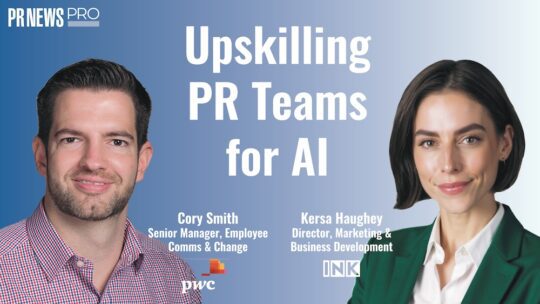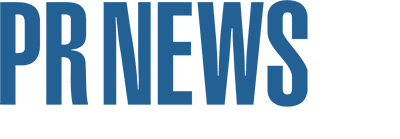
Kersa Haughey, Director, Marketing and Business Development, INK Communications Co. and Cory Smith, Senior Manager, Employee Communications and Change, PwC, give us a quick rundown featuring steps for getting employees started to use AI. This clip explores structured sprints, resource development and the crucial role of surveys in driving successful AI adoption.
These tips are part of "AI for Internal Use—Upskilling PR Pros, Use Cases and More."
This session was part of during the PRNEWS Pro workshop "AI for PR."
Watch the Q&A segment here or watch the full session at this link.
Full transcript:
[KERSA HAUGHEY]
We had three phases. The first one was all around developing our plan for creating how we were going to implement AI, identifying which exact tools we wanted to use and adopt, and defining those top three use cases.
And then the second phase was around developing our resources. So developing our AI policy, developing any content that our teams might need and crafting that that training series that we would need at the get-go.
And then the third phase is an initial launch. So that's like a 101 level training series around do you know what is AI? Because we had a whole range of people who had different experience with the technology, who understood it differently, different comfort levels and reusable prompt frameworks, just really foundational knowledge to get them started.
And I'll back up just a minute. I missed a step. We also deployed a survey that really informed all of those phases. So, when I mentioned that there were different levels of knowledge and different levels of comfort with the technology, we were able to gain a lot of that insight on what type of group we were working with from a survey we sent out before we launched that later phase. And that really guided the type of training and assets that we developed and also will be a great benchmark when we deploy the survey again next year. It's designed to be an annual survey which will be really nice.
So after those three phases then we identified a a bit wider group of early adopters and those became our sort of AI advocates, and they're our really reliable use case testers. We're able to get insights from them and feedback on how things are working and and kind of evolve from there.
[KAYLEE HULTGREN]
That's great. And Corey, how was it at your organization?
[CORY SMITH]
Yeah, we followed a similar path, and we have set up kind of an AI champions group. I think at first it was folks who were interested and then also folks who were kind of voluntold to do it at at different levels, and that eventually evolved into people who were more passionate about it, and just because they could fit the role, and they were really kind of our AR champions and those people who weren't as interested, that's fine. They said they they'd rather not be a part of the group.
And so we did get to a point where our AR champions are, you know, different levels across different verticals within our team. And they're sort of, you know, responsible as kind of the arms and legs, right? They're getting sentiment and feedback from the folks using the AI in the business, right? Where it doesn't always have to be me or my leader talking about AI. They're really talking to their peers and have found that the peer-to-peer communication works really well. And so they'll kind of act as a sounding board getting input and feedback about how we could improve our tools, which ones are the most helpful in their daily jobs. And so that's been great, they've been awesome to have and you know a really good group, a network that we have to help promote AI adoption and get feedback as well.
And so I think yeah the important thing to realize it's part of like the change managers like everybody's at a different stage of their journey at different times. Some people are really eager to go for the latest tools, and then there are some people who do have fears about using AI and what it might mean for their job.
And so just as a firm we've really positioned it as it helps, it's not going to replace your work, but it's going to help aid it, and I think we've started to see some of those different benefits across our team. We're not necessarily reporting on some of the hard metrics or figures but just anecdotally, and we're constantly just trying to find new and different ways for people to use it, and that's been really helpful and just highlighting the different kinds of use cases.
Produced by: PRNEWS
